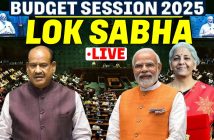Amazing Impacts of Monetary Policy Initiatives. Monetary Policy decisions can do magic. The break of the Ukraine war depreciated theAmazing Impacts of Monetary Policy Initiatives. Monetary Policy decisions can do magic. The break of the Ukraine war depreciated the Russian Rouble by 56%, from 75.08 to 133.99 per US$ on 13.03.2022. The observers thought it was the end of Rouble. The monetary policy counter efforts by the Russian Central Bank brought back the value to 74.37 per US$ on 26.04.2022.
The revival within 45 days is reminiscent of India’s remarkable economic recovery in 1991. The monetary policy mechanisation shaped India into one of the largest economies in the world.
Tweaking a quarter per cent of interest every two months by RBI
appears innocuous to many. Nevertheless, the baby steps of RBI have
long term impacts on the economy. Inflation leads central banks to
enhance interest rates to help cool down a hot economy.
The initiatives moderate inflation and protect the currency’s value with higher interestrates increasing the currency’s value compared to economies with lower interest rates. Political stability and the demand for a country’s goods are essential factors in currency valuation. Higher interest rates pull foreign investment, increasing the need for and value of the home currency.
On the contrary, lower interest rates become unattractive for
foreign investment and decrease the currency’s relative value. India has
consistently followed a high rate policy and reaped dividends.
Russia redeemed its currency value due to its monopolistic position in
gas, arms and wheat.
The demand for Russian goods is so high thatEurope bought Roubles to pay gas bills. Sellers’ sudden insistence on Rouble payments enhanced the need for its currency, restoring the value to pre-sanction days. Russia’s positive trade balance between imports and exports also restored the value of its currency. Another critical factor that helped is Russia’s level of debt.
While manageable forshorter periods, low debt levels eventually led to the revaluation of the currency. There were no defaults despite SWIFT sanctions.An interest rate reflects the cost of borrowing money. It provides compensation for the service and the risk of lending money. The wheels of the economy move by encouraging people to borrow, lend, and spend. Interest rates are constantly changing, and different types of loans offer different interest rates.
The lender risks default from aborrower who may not pay back the loan. Thus, interest provides partial compensation for bearing risk. It also covers the risk of inflation. After the money is lent, the prices of goods and services vary by the time they are repaid, adversely impacting original purchasing power. Interest protects against future rises in inflation. Banks also use the interest to factor account servicing costs.
Borrowers pay interest to pay the price to gain the ability to spend now instead of waiting years to save up enough money. For example, a
family may take out a home loan for a house it cannot pay in full, but the
loan allows the family to become a homeowner now instead of far into
the future. As inflation rises, the interest rates go up, likely to increase
further. The lenders compensate for the decrease in purchasing power
of the money repaid in the future.
When the government buys more securities, banks get more money
than they can use for lending, and the interest rates decrease. When the
government sells securities, money from the banks is drained for the
transaction, rendering fewer funds at the banks’ disposal for lending,
forcing a rise in interest rates.
Why do higher interest rates usually lead to currency values increasing?
Investors need to purchase the domestic currency to invest in that
country and pay for the goods purchased or collect a higher interest
rate. A country with a high demand for its goods tends to export more
than it imports, increasing demand for its currency.
The economy that exports more than imports will have less need for its money. Russia faces inflation of 20%, four times that of India. The sanctions impaired Russia’s capability to import and export goods to conduct financial transactions. Russian Central bank quickly ended the hyper- inflation by doubling the key lending rate to 20 per cent. Raising
borrowing costs tamed inflation.
The capital controls ordered to convert 80% of foreign-denominated revenues into Roubles and discontinuing supplies to Poland and Bulgaria after refusing to pay in Roubles increased the currency’s demand and value.
The quick turnaround of the Russian money reveals the power of monetary policy management. Over the years, the Central banks have used interest as a monetary tool. Quantitative easing and tightening through interest rate modulation can make or mar an economy in record time.
– Hargovind Sachdev




